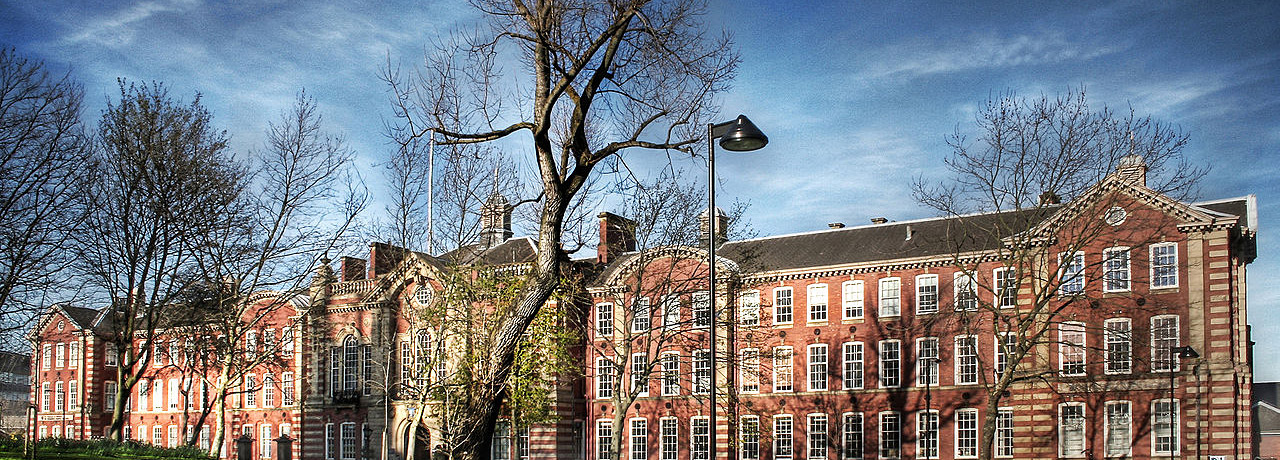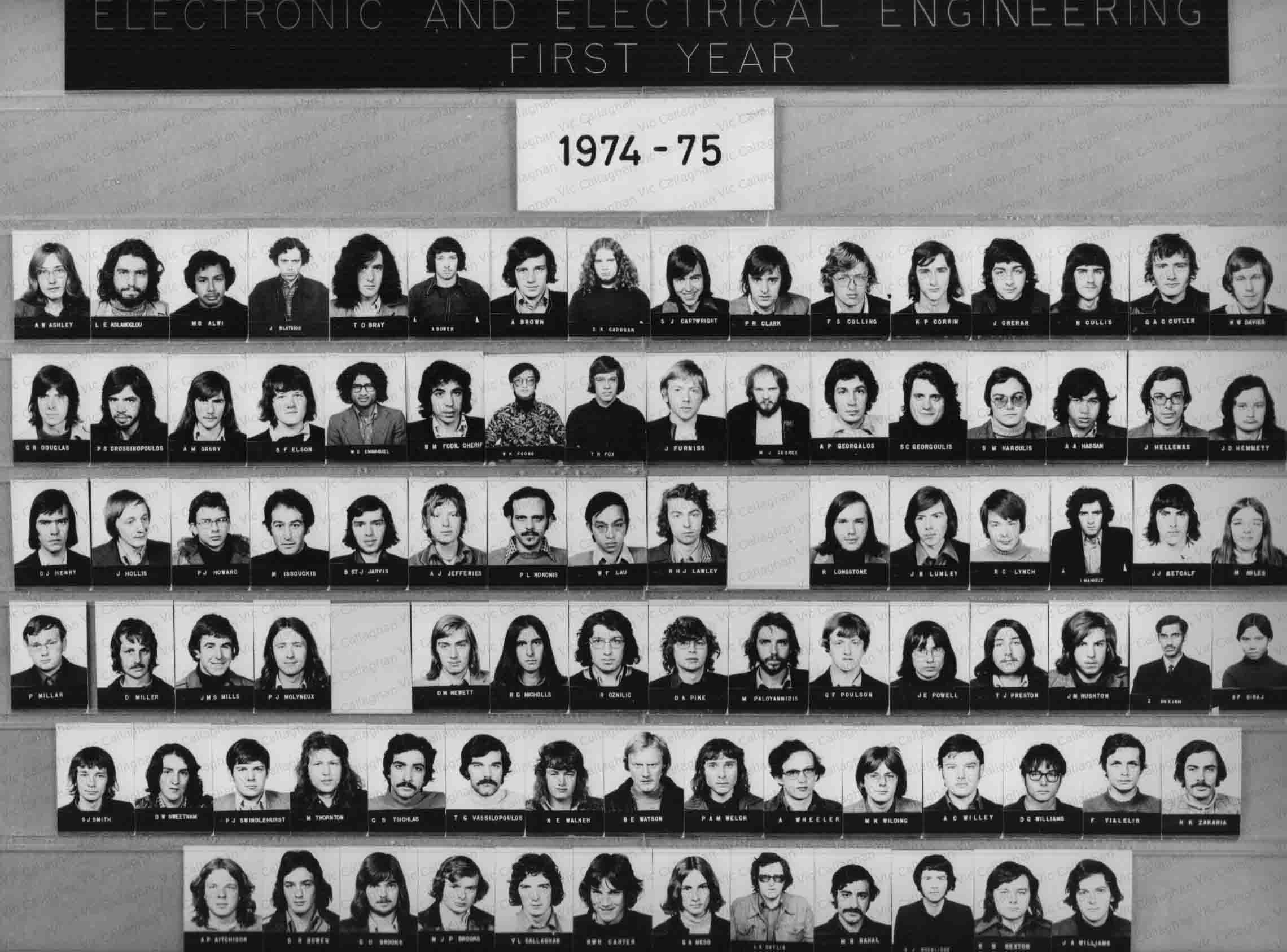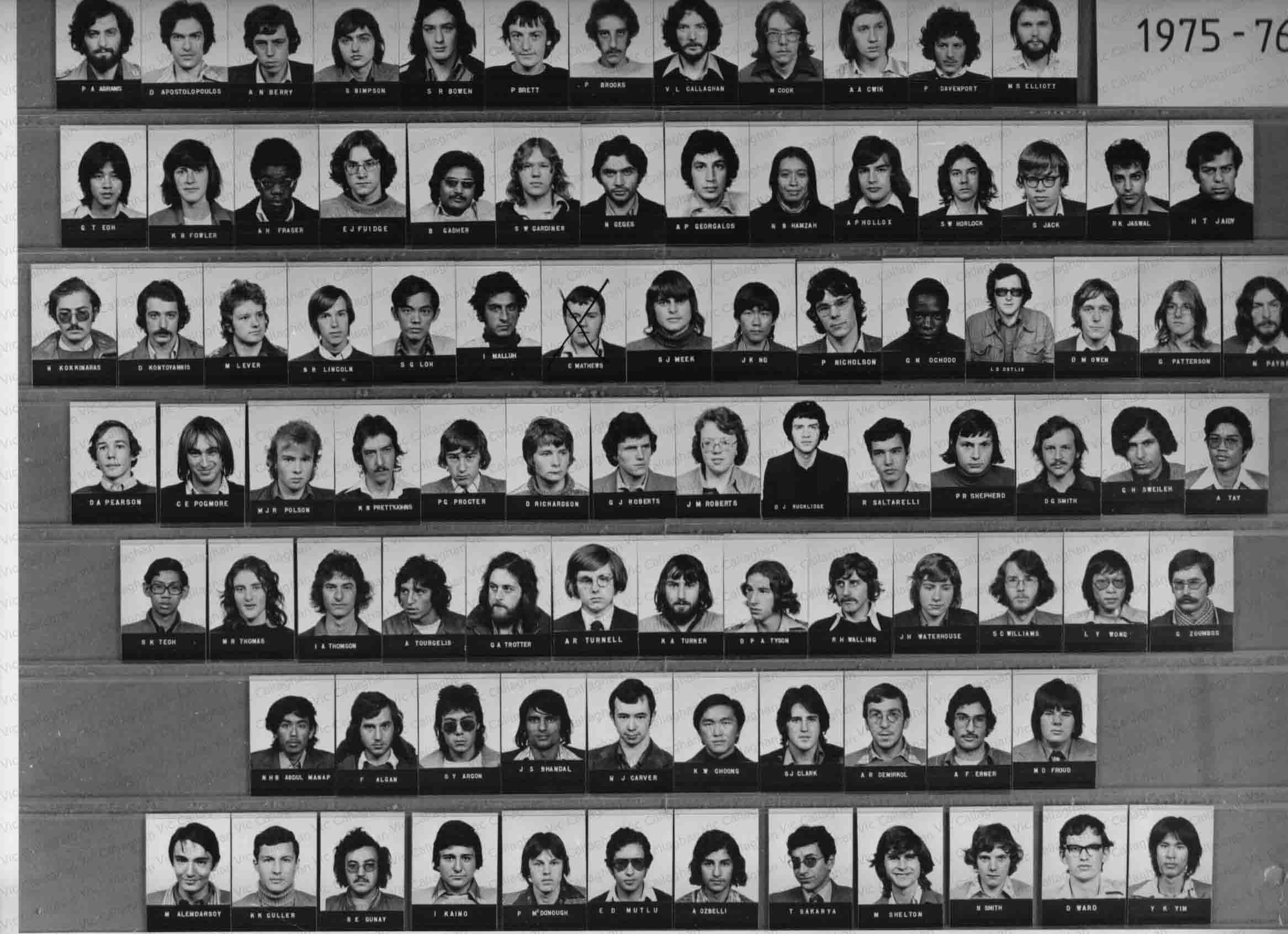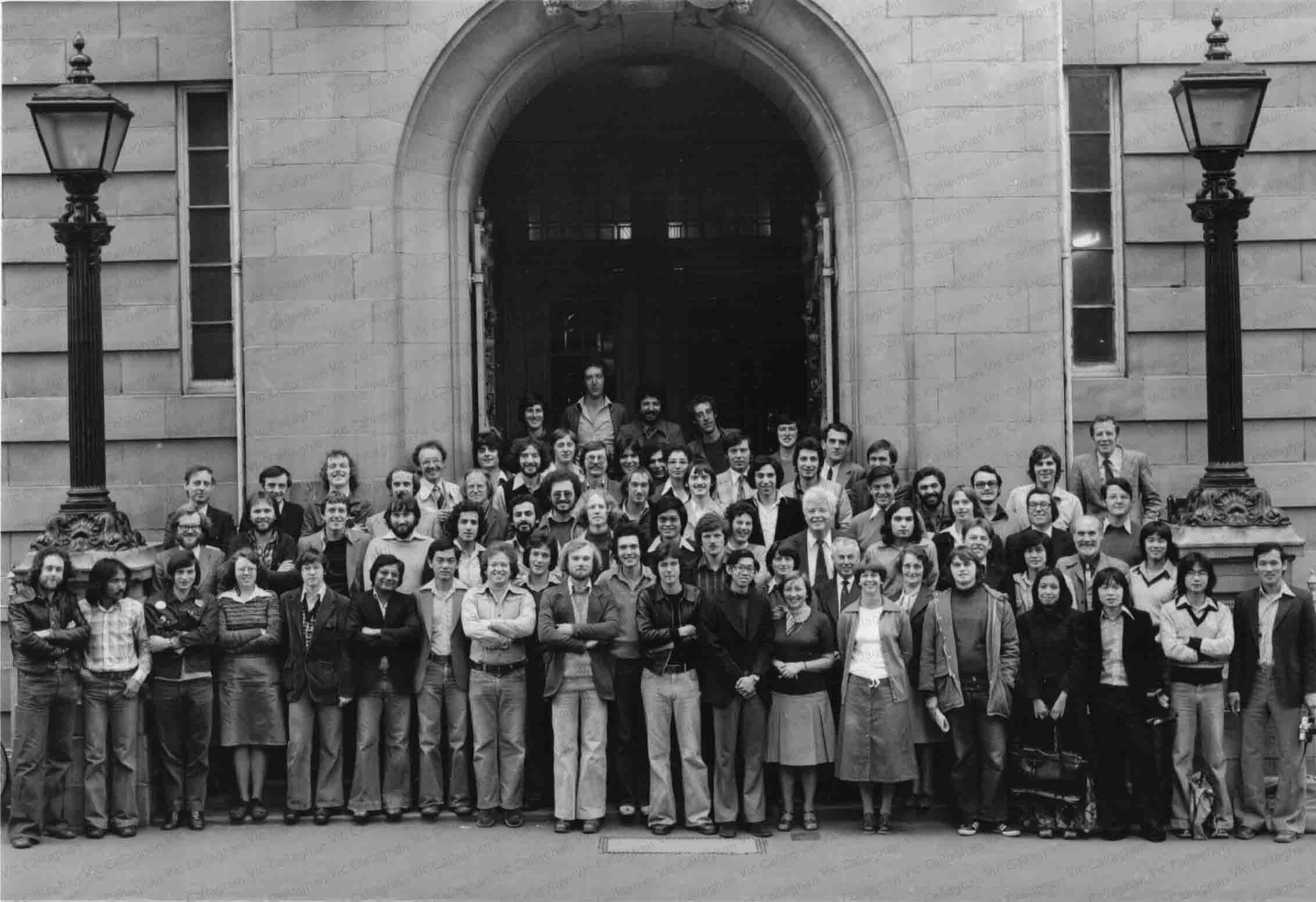Electronic & Electrical Engineering, Sheffield University, 1974/75 Student Intake

The following ‘rogues galleries‘ were displayed outside the office of the Department of Electronic & Electrical Engineering, Sheffield University, on the first floor of the Sir Frederick Mappin (1) Building on Mappin Street, Sheffield, UK. The building houses the Sheffield University engineering departments. The displays boards were fairly iconic, as Electronic & Electrical Engineering students would walk past these displays on their way to lectures. Although the Sir Frederick Mappin Building remains remarkably unchanged since it was opened in 1904, in part due to it being a grade II-listed building, there have been some significant changes to the overall site such as the closure of the nearby St Georges church in 1981 and its conversion into lecture a theater and student accommodation by Sheffield University (1994) plus, the more major £10 million revamp of the university’s engineering faculty, the so-called Heartspace development, which connects the Mappin Building (circa 1904) with the Central Wing (circa 1855). These works involve creating a four-storey glass atrium, which houses new laboratories, offices and a café, as well as providing a ‘collaboration space’ for students and staff from different departments. A new entrance leads from Portobello Street, a name that will conjures up images of an old portacabin cafe on Portobello Street, which will have left a lasting impression in graduates old enough to remember it!
In the following ‘rouges galleries‘, if you are interested in seeing higher definition versions (but much larger file sizes), click on the photographs.
The 1974 Entry to the Electronic & Electrical Engineering B.Eng Degree Scheme (below)
The 1975 Entry to the Electronic & Electrical Engineering B.Eng Degree Scheme (below)
The 1978 B.Eng in Electrical & Electronic Engineering graduation class (below)
The 1979 Electrical & Electronic Engineering Postgraduates (below)
Finally, if you are interested in making connections with past colleagues, check out the Sheffield University Engineering Linked-in network or, of course, drop me an email.
(1) Sir Frederick Mappin (1821–1910), was a prominent Sheffield industrialist owning a cutlery company and steelworks who became one of the founding fathers of Sheffield University.
A Personal Note: If you have watched the movie ‘The Adjustment Bureau‘ you will have encountered the concept that our lives are determined by a series of connected events (and decisions). In my life one of the biggest (and most influential) events was going to study Electronics and Electrical Engineering at the University of Sheffield. I found university to be an almost magical place, where the academics possessed a type of ‘magic dust‘, called knowledge that rivaled the power of ‘Harry Potter‘ spells in its ability to empower students and transform the world. It seemed that university was like a treasure trove of glittering ideas and knowledge, handed out freely to all who stretched their hands forward. Of course schools of wizardry and universities are of little value without people and, early on in my life, I realised that people (rather than things) have the power to make the most profound and lasting differences to all our lives. Fundamentally we all need friends and Sheffield University introduced me to some extraordinary people, my fellow students, who shared experiences (academic and social) and many of whom remain life-long and cherished friends, notably (in alphabetical order) Tim Alderton, Trevor Benson, Steve Bowen, Martin Cook, Paul Davenport, Martin Elliott, Keith Fowler, Robert Holland, Steve Meek, Lars Ostlie, Duncan Owen, Keith Prettyjohns, Alex Price, Keith Turner and Maurice Shakeshaft who are but one of many clusters, born in the university, who have remained in contact with each other since those distant days (if you studied with us and are not in this list, get in touch so we can resume contact!). Naturally, as a place of learning, our teachers played a pivotal role. Of the many fine teachers I had, I am especially indebted to Professor Keith Barker, who taught me digital electronics, supervised by final year undergraduate project, got me an EPSRC scholarship to undertake a PhD, opened an opportunity for me to start lecturing (at Sheffield University), organised a visiting position for me in the University of Connecticut and shaped my life to what I since became. Likewise, I recall with gratitude the important role that my co-PhD supervisor, Dr Doug Thomsit, played in that phase of my life. I hold a deep respect for Prof Frank Benson who demonstrated it is possible to be nice person and a successful leader and whom I had the good fortune to have as my internal examiner for my PhD viva. When going through an old box in my attic, I came across a letter, offering me an undergraduate place at Sheffield University, that was signed by Professor Ian Freestone who not only touched my life at that important moment but, as part of the unplanned twists and turns of life, was someone I went on to write an academic paper with (together with a student called Nick Russel) during my year as a temporary lecturer at Sheffield. First impressions are so important and the first member of staff I met was Dr Terry Birch, who was my undergraduate tutor and someone who steered me and my fellow students through the turbulent waters of entering higher education. My account of my university life would not be complete without mentioning the extraordinary Dr Gywn Rowley, a geographer at Sheffield University, a truly adventurous and ‘larger than life’ academic, who instigated the Ferranti Market Research Terminal Project (Questronic) project, pressing University of Sheffield to become more interdisciplinary and entrepreneurial (a frustrating experience since he was ahead of his time) proving himself to be a role model for me, and a dear life-long friend. Where would we all be without without the helping hand of others? The people mentioned on these pages transformed my life for the better, something I am eternally grateful to them for.




